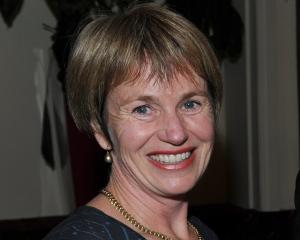"I think anyone farming in this district will tell you it won't work. I just don't think it's going to happen," the North Otago Federated Farmers high country representative said this week.
The farmer has irrigation on his own property, Glenbrook Station, as part of the Benmore Irrigation Company's scheme, said he was not against development.
Nor was he against what those behind the applications were trying to do.
"I'm against the way they are going about it."
He believed they had tried to sneak the consent applications through, hoping they would not have to be notified.
People in the area were "reasonably upset" about the proposal because it had "come out of nowhere".
Those behind the applications did not live in the district, nor did they have an affinity to it, Mr Williamson said.
They would have to be "squeaky clean" to get away with what they wanted to do.
If they could get their consents granted, "good luck to them", he said.
Another Omarama resident, who did not want to be named, described the proposal as "too much, too quick, too ugly, too everything".
He said Omarama farmers were both nervous and worried, not just for themselves but for future generations, some of whom were fourth- and fifth-generation farmers on the land.
His biggest worry was the "absolutely massive" effluent production from the large numbers of cows.
There were a lot of unknown risks and he was concerned those behind the proposals did not have contingency plans.
The proposals did not fit the image of the area - known for its broad, open basin and pastoral environment.
People did not want to see the quality of water in lakes and rivers affected and they did not want to see massive sheds which would be a "blot on the landscape".
Another farmer said there was a "degree of disquiet" among locals about the proposals and with the way the developers had proceeded.
"We only get one crack at this. With [nearly] 18,000 cows, if it goes wrong . . . once it's too late, game over - we can't turn the clock back."
At present, there was a happy balance between some relatively extensive irrigation which was making family farms more sustainable.
"This is about the most intensive agriculture on relatively small blocks in areas that are very fragile," he said.
Calls to Richard Peacocke, a director of two of the three companies - Southdown Holdings Ltd and Williamson Holdings Ltd - seeking a response to the farmers' comments, were not returned.
Last week, Mr Peacocke broke his silence because of what he called "hysteria" over the proposals.
He has refused to speak to the media about the developments, saying the proper place for debate is through the consents process being conducted by ECan.
He issued a press release last week rejecting claims the operations would be "factory farming".




